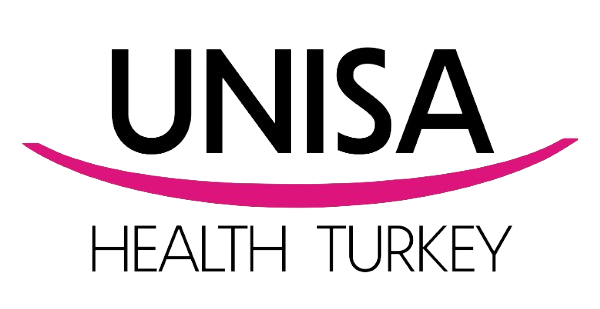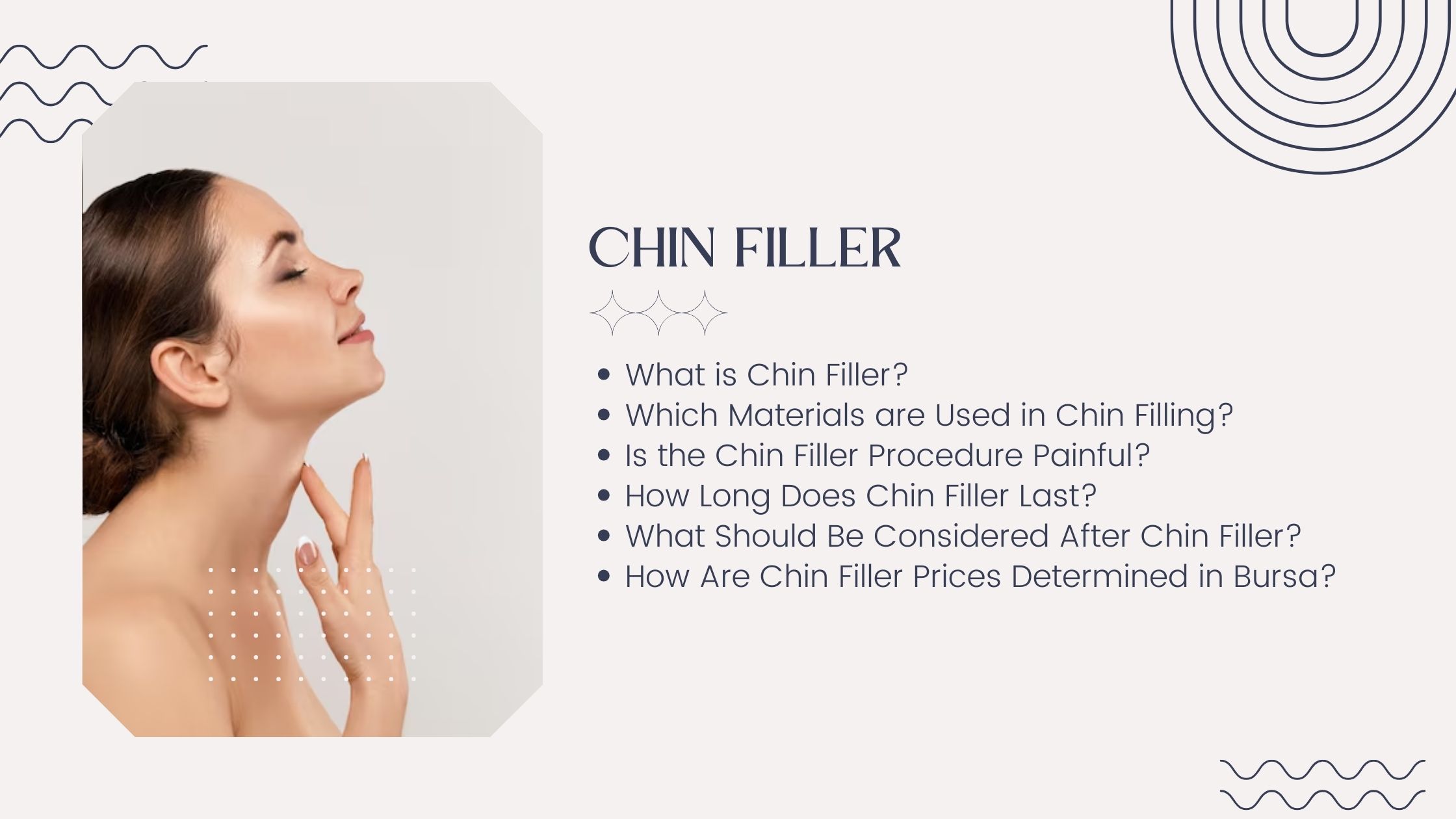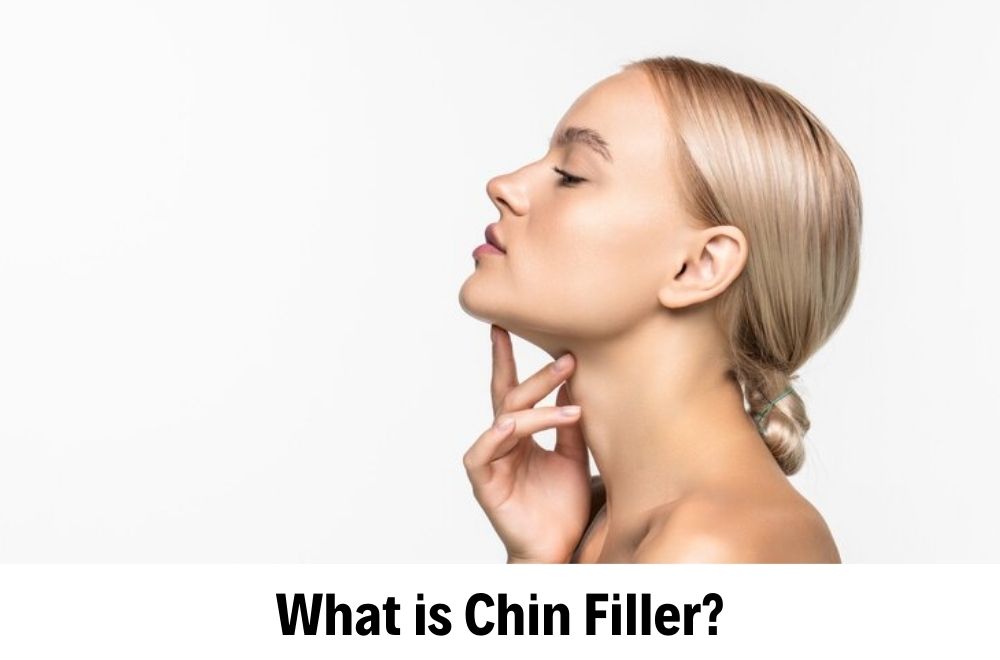Hello,
How Can We Help You?
Contact Form
Fill in the form and we will contact you as quickly as possible.
Contact us on Whatsapp
Scan with your camera app or click the QR code to start a conversation.


Chin filler is a cosmetic procedure used to improve or reshape the chin's shape and volume. This procedure is typically performed using fillers such as hyaluronic acid. Chin filler can be applied for various aesthetic purposes, such as defining the jawline, increasing chin projection, or correcting chin asymmetry.
Hyaluronic acid, a commonly used filler, is a naturally occurring substance in the body and is widely used to address volume loss in the skin, fill wrinkles, and enhance facial contours. The chin filler procedure involves injecting this filler into specific areas. It can be used in the lower chin area, the chin tip, or both, to create a more defined and balanced appearance.
Chin filler procedures are usually performed in clinical settings by expert healthcare professionals. Before the procedure, it's important to evaluate the patient's expectations and desires, assess the chin structure, and choose the appropriate filler. During the procedure, the filler is injected into the designated areas using a fine needle to shape the chin as desired.
The chin filler procedure is typically quick and relatively painless. However, there may be slight discomfort in some sensitive areas. After the procedure, temporary side effects like mild swelling, redness, or sensitivity may occur but usually subside within a few days.
In conclusion, chin filler offers an aesthetic option for those who want to define their jawline, increase chin volume, or correct asymmetries. However, as with any cosmetic procedure, it is essential to consult with a healthcare professional before undergoing chin filler. The expert can create a treatment plan tailored to the individual's needs and desires and provide guidance throughout the procedure.

The chin filler procedure generally uses fillers such as hyaluronic acid. Hyaluronic acid is a naturally occurring substance in the body that helps keep the skin hydrated, plump, and elastic. Therefore, hyaluronic acid is a popular choice for cosmetic procedures like chin filler.
Hyaluronic acid fillers are gel-like substances injected under the skin using a fine needle. These fillers can be injected into specific areas of the chin to define the jawline, increase chin projection, or correct chin asymmetry.
Before the procedure, the patient's chin structure and desires are evaluated, and the appropriate filler is chosen. Hyaluronic acid fillers come in different concentrations and viscosities, offering options suitable for various aesthetic needs and treatment goals.
During the procedure, hyaluronic acid filler is injected into the designated areas using a fine needle. This procedure is typically performed in clinical settings by expert healthcare professionals. The filler is injected into the deeper layers of the skin to shape the chin as desired.
Hyaluronic acid fillers are gradually absorbed by the body after the chin filler procedure. Therefore, the chin filler procedure comes with a temporary improvement process. However, the effects are usually immediately noticeable, and optimal results are achieved within a few days.
In conclusion, using fillers such as hyaluronic acid in the chin filler procedure allows for defining or reshaping the chin contours. However, it is important to consult with a healthcare professional before the procedure and create an appropriate treatment plan. The expert can choose a suitable filler for the patient's needs and desires and provide guidance throughout the procedure.
The chin filler procedure is generally associated with minimal pain or discomfort. However, the experience may vary depending on factors such as the individual's pain threshold, sensitivity, and the techniques used during the procedure.
The local anesthetics included in the filler used during the procedure typically help minimize pain. Additionally, some clinics may use methods such as applying a local anesthetic cream or ice before the procedure to reduce pain.
During the chin filler procedure, the filler is injected into the deeper layers of the skin using a fine needle. These injections may cause slight discomfort or pressure, but they are generally not painful. Some individuals may experience a mild burning or stinging sensation in the areas where the filler is injected.
The sensation of pain can vary depending on factors such as the individual's overall health, pain threshold, and the characteristics of the filler used. Especially sensitive individuals may feel slight discomfort during the procedure.
However, in most cases, the chin filler procedure is relatively quick and performed in a relaxing environment. Additionally, procedures performed by experienced healthcare professionals usually involve minimal pain or discomfort.
After the procedure, temporary side effects such as mild swelling, redness, or sensitivity may occur. However, these side effects generally resolve within a few days. Moreover, methods recommended by the doctor can be applied to reduce pain during the post-procedure period.
In conclusion, the chin filler procedure is generally associated with minimal pain or discomfort. However, various methods can be used to help the individual relax before and after the procedure.

The results of the chin filler procedure can vary depending on the type of filler used, the individual's metabolism, and the structure of the tissues in the chin area. However, in general, chin filler durability can range from a few months to a few years.
Commonly used fillers such as hyaluronic acid generally provide temporary results. These fillers are gradually absorbed by the body over time, reducing the effect of maintaining volume in the chin area. Therefore, the effects of chin filler procedures using hyaluronic acid fillers usually last between 6 to 18 months. However, this duration can be longer or shorter for some individuals.
The durability period can vary depending on factors such as the individual's metabolism, age, skin type, and the structure of the tissues in the chin area. Additionally, factors such as the individual's lifestyle, level of sun exposure, and smoking habits can affect how long the filler lasts.
More permanent fillers such as calcium hydroxyapatite are also available. These fillers create a structure that stays in the body for a longer period, preserving the effects of chin filler for a longer time. However, procedures using these fillers are harder to reverse, and the risk of side effects may increase.
The post-procedure durability of the filler depends on the individual's preferences, expectations, and willingness for repeated procedures. Some individuals prefer regular chin filler touch-ups, while others seek more long-lasting results.
In conclusion, the durability of chin filler procedure results can vary from person to person and depends on the type of filler used. With the appropriate filler choice and regular follow-ups, the results of the chin filler procedure can be long-lasting.
There are several important points to consider after the chin filler procedure:
Post-Procedure Care: It is recommended to gently massage the treated area and apply a cold compress after the chin filler procedure. This can reduce swelling and provide relief.
Avoiding Exercise and Heavy Lifting: Avoid heavy exercise for a few days after the procedure. Additionally, activities such as heavy lifting, excessive chewing, or overuse of facial muscles may shift the filler or reduce its effectiveness.
Avoiding Alcohol and Blood Thinners: Avoid consuming blood-thinning medications or alcohol after the procedure. This can cause bleeding and affect the healing process.
Sun Protection : Protect the treated area from direct sunlight. Excessive sun exposure can affect the results of the filler and lead to side effects such as swelling or redness.
Consulting with a Doctor: Consult with a healthcare professional about any unusual side effects or discomforts after the procedure. They can advise on how to care for the treated area and achieve the best results.
Routine Follow-ups: Routine follow-ups can help monitor the treated area and extend the duration of the filler. The healthcare professional can check the treatment results and recommend touch-ups.
In conclusion, there are several important considerations to keep in mind after the chin filler procedure. Post-procedure care and regular follow-ups can enhance the effectiveness of the filler and ensure long-lasting results.
Chin filler prices in Bursa can vary depending on several factors:
Clinic's Reputation: The clinic's reputation and the healthcare professionals' experience may affect the prices.
Filler Type: Different types and brands of fillers may come with different price ranges. Hyaluronic acid fillers are typically less expensive than more permanent fillers such as calcium hydroxyapatite.
Amount of Filler Used: The amount of filler required for the procedure can affect the total cost. The more filler used, the higher the price may be.
Additional Costs: Factors such as pre-procedure consultations, post-procedure care, and additional treatments may add to the overall cost.
Chin filler prices may vary based on these factors. Therefore, it is recommended to obtain detailed information from clinics before the procedure and understand what is included in the cost. Some clinics may offer package deals or discounts, so researching options is important to make an informed decision.
Contact Form
Fill in the form and we will contact you as quickly as possible.
Contact us on Whatsapp
Scan with your camera app or click the QR code to start a conversation.